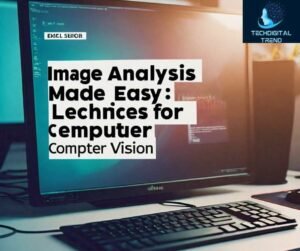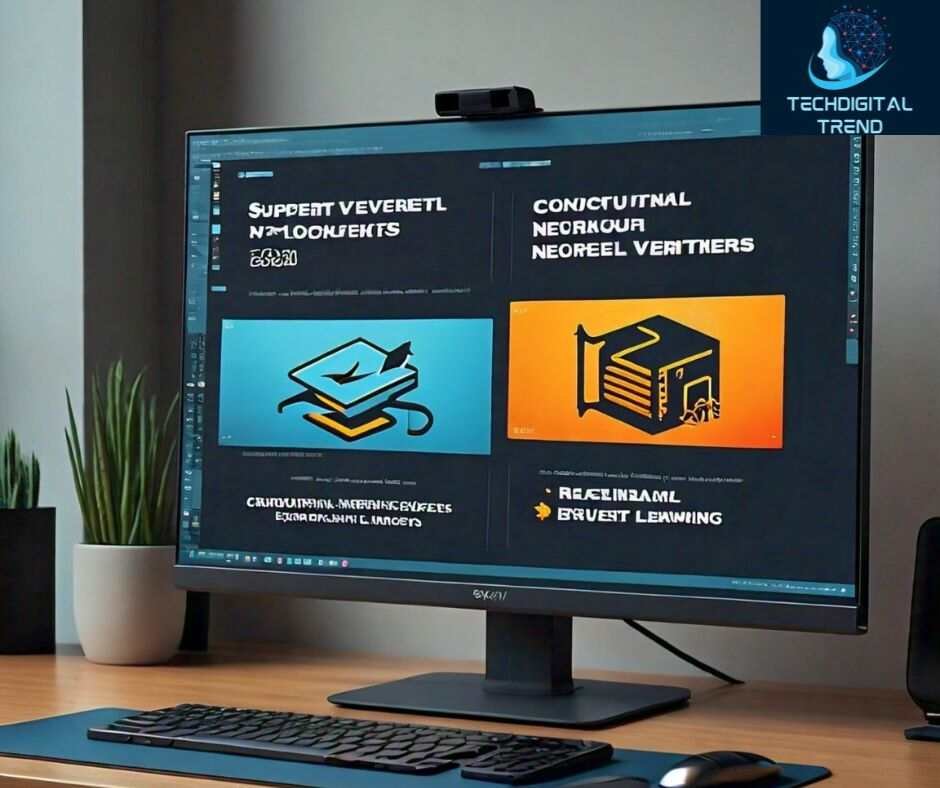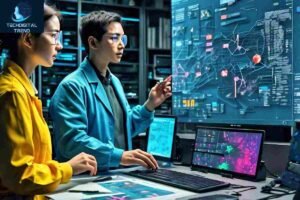Table of Contents
ToggleImage
Computer vision, a field that deals with image and video analysis, has undergone a significant transformation with the advent of machine learning. The integration of machine learning techniques has enabled computer vision to tackle complex tasks with remarkable accuracy. In this article, we’ll delve into the world of machine learning for computer vision, exploring four key techniques that are revolutionizing the field.
Convolutional Neural Networks (CNNs)
One kind of neural network that has shown to be useful in image processing is the CNN. CNNs can extract features from pictures and perform tasks like object identification, segmentation, and image classification by utilizing convolutional and pooling layers. CNNs have produced cutting-edge outcomes in a range of computer vision tasks, such as:
- Image classification: CNNs can classify images into different categories, such as objects, scenes, and actions.
- Object detection: CNNs can detect objects within images, such as faces, cars, and animals.
- Segmentation: CNNs can segment images into their constituent parts, such as objects, background, and text.
Object Detection
Object detection, a technique used to locate and classify objects within images, has numerous applications in fields like self-driving cars, surveillance, and healthcare. Machine learning algorithms like YOLO (You Only Look Once) and SSD (Single Shot Detector) have achieved remarkable success in object detection tasks. These algorithms can detect objects in real-time, making them suitable for applications like:
- Self-driving cars: Object detection algorithms can detect pedestrians, cars, and other objects on the road, enabling self-driving cars to navigate safely.
- Surveillance: Object detection algorithms can detect people, cars, and other objects in surveillance footage, enabling security personnel to respond to potential threats.
- Healthcare: Object detection algorithms can detect tumors, organs, and other anatomical structures in medical images, enabling doctors to diagnose diseases more accurately.
Segmentation
Image segmentation, the process of dividing an image into its constituent parts, is a crucial task in computer vision. Machine learning techniques like U-Net and Fully Convolutional Networks (FCNs) have achieved state-of-the-art results in segmentation tasks, enabling applications like:
- Medical image analysis: Segmentation algorithms can segment medical images into different regions, such as tumors, organs, and bones.
- Autonomous driving: Segmentation algorithms can segment images into different regions, such as roads, pedestrians, and cars.
- Quality control: Segmentation algorithms can segment images into different regions, such as defects and non-defects.
Facial Recognition
Facial recognition, a technique used to identify individuals based on their facial features, has numerous applications in fields like security, law enforcement, and advertising. Machine learning algorithms like FaceNet and VGGFace have achieved remarkable success in facial recognition tasks. These algorithms can recognize faces in real-time, making them suitable for applications like:
- Security: Facial recognition algorithms can recognize individuals in security footage, enabling security personnel to respond to potential threats.
- Law enforcement: Facial recognition algorithms can recognize individuals in criminal databases, enabling law enforcement agencies to identify suspects more accurately.
- Advertising: Facial recognition algorithms can recognize individuals in advertisements, enabling advertisers to target their audience more effectively.
Machine Learning’s Practical Uses in Computer Vision
Machine learning in computer vision has numerous real-world applications, including:
- Self-driving cars
- Facial recognition
- Medical image analysis
- Autonomous robots
- Surveillance systems
- Quality control in manufacturing
- Agricultural analysis
- Environmental monitoring
Advantages of Machine Learning in Computer Vision
The integration of machine learning in computer vision offers several advantages, including:
- Improved accuracy
- Increased efficiency
- Enhanced productivity
- Ability to handle large datasets
- Flexibility and adaptability
- Improved decision-making

Machine Learning in Computer Vision: Obstacles and Restrictions
While machine learning has revolutionized computer vision, it also presents several challenges and limitations, including:
- Data quality and availability
- Class imbalance and bias
- Explainability and interpretability
- Adversarial attacks and robustness
- Ethical considerations and privacy concerns
Future of Machine Learning in Computer Vision
The future of machine learning in computer vision is promising, with several emerging trends and advancements, including:
- Explainable AI and transparency
- Adversarial robustness and security
- Multi-modal learning and fusion
- Real-time processing and edge computing
Conclusion
computer vision using machine learning is a strong technology with a wide range of uses. Computer vision can perform tasks like picture categorization, object identification, segmentation, and facial recognition by utilizing machine learning algorithms and deep learning approaches. Modern computer vision tasks may now be completed with state-of-the-art outcomes because to this technology, which has the potential to completely transform sectors including manufacturing, security, and healthcare.
There are a number of obstacles and restrictions associated with machine learning for computer vision, though, including issues with robustness and adversarial assaults, explainability and interpretability, class imbalance and bias, data quality and availability, and privacy and ethical problems. Prioritizing data quality, creating more reliable and understandable algorithms, and making sure the technology is in line with moral and ethical principles are the keys for researchers and developers to overcome these obstacles.
With a number of cutting-edge developments and trends, such as explainable AI and transparency, adversarial robustness and security, multi-modal learning and fusion, real-time processing and edge computing, autonomous systems and decision-making, and multi-modal learning and fusion, the future of machine learning for computer vision is bright. We may anticipate seeing increasingly complex computer vision applications across a range of sectors as technology develops further, which will boost output, productivity, and decision-making.
We have covered the fundamentals of machine learning for computer vision in this article, along with important methods, uses, and difficulties. We have also spoken about the possible effects on several businesses that machine learning for computer vision may have in the future. Knowing machine learning for computer vision may assist you, as a developer, researcher, or entrepreneur, open up new avenues and revolutionize your field.
Here are some salient points
Computer vision tasks including object identification, segmentation, facial recognition, and picture classification can be made possible using machine learning, a potent technology. Numerous industries, including healthcare, security, industry, and agriculture, have used computer vision in some capacity.
There are some obstacles and restrictions associated with machine learning for computer vision, including as data availability and quality, class imbalance and bias, interpretability, and explainability, robustness against adversarial assaults, ethical issues, and privacy problems.
With several new trends and developments in machine learning for computer vision, such as explainable AI and transparency, adversarial robustness and security, multi-modal learning and fusion, edge computing and real-time processing, autonomous systems, and decision-making, the field’s future looks bright.
Open this link: Tap to here














